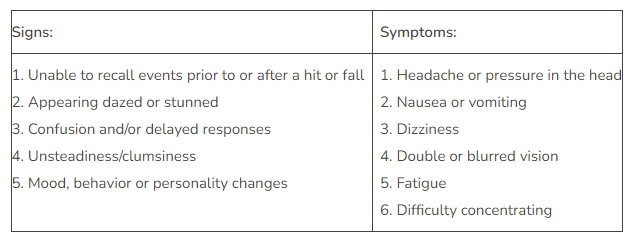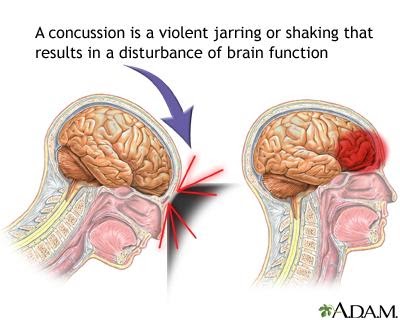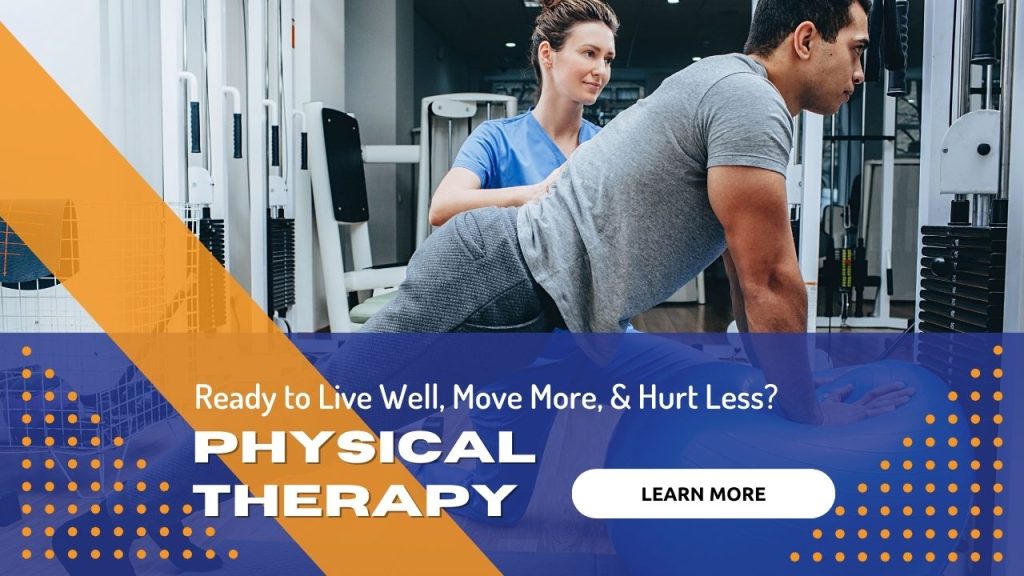Concussion
What is a Concussion?
A concussion, or mild traumatic brain injury (mTBI), is a disturbance in brain function resulting from a sudden direct blow to the head. A concussion may be indirectly caused when a sudden force causes the brain to strike the inside of the skull or twist within the skull causing damage to the brain cells.

Symptoms such as unequal pupil size, drowsiness, constant headache, slurred speech, decreased coordination, seizures, and loss of consciousness, unusual agitation or increased confusion warrant immediate medical attention because they may indicate a collection of blood (Hematoma) forming on the brain.

Concussion Diagnosis
If a concussion is suspected in an athlete during a game or practice situation, he/she should be removed from the activity immediately and evaluated. If someone returns to activity too soon, the brain may not heal properly and the risk of having a repeat concussion is increased because reaction time and brain processing are not normal. Repeat concussion is typically worse and recovery time is increased.
Imaging may be performed, such as a CT scan, to rule out any serious brain injury. Oftentimes, concussion or mTBI does not appear on routine brain scans such as CT or MRI. There is no diagnostic test for concussion. Diagnosis is based on a group of symptoms that appear following the incident. Presence of three or more symptoms within four weeks of injury is classified as PCS.
Other tests can be performed to assess memory, concentration, balance, and cognitive response time called neuropsychological or neurocognitive test. Oftentimes, these tests are performed at the beginning of the season to establish a baseline and comparison will help the clinician determine how the concussion has affected the individual.
How Can Physical Therapy Help a Concussion?
Individualized recommendations are provided during vestibular therapy based on identified symptoms. Commonly, someone with a concussion may also have neck pain, inner ear involvement and imbalance/disequilibrium. Therefore, treatment will address concussion symptoms as well as techniques to decrease pain and improve balance. Beginning with a short period of rest followed by graded exposure to activity is a universal practice following a concussion.
Recommendations from clinicians may include short term rest from strenuous activity. Generally, spending more of the day simply resting quietly is beneficial to allow the brain to heal just as one would allow a broken leg or arm to heal. Limiting visual activities (i.e. screen time) may reduce eye strain and tension headaches. Avoiding busy environments (i.e. crowded stores or restaurants, heavy traffic) will decrease provocation of dizziness.




